8. Harry Potter and the Prisoner of Azkaban (2004)
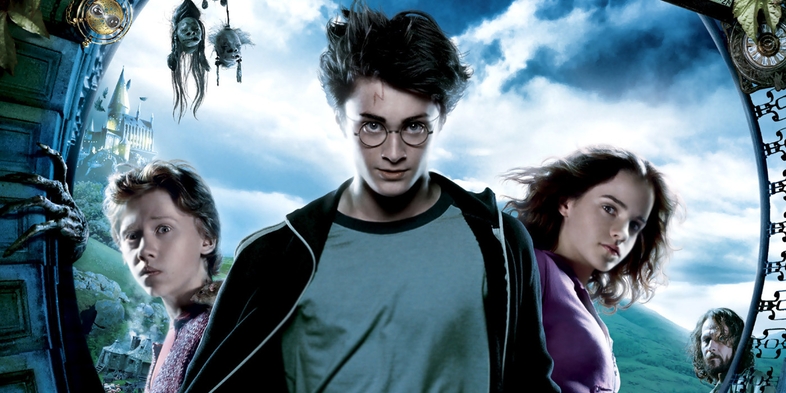
“Prisoner of Azkaban” is the closest the Harry Potter series comes to displaying a director’s unique vision. Compared to the relatively cookie-cutter direction of the later sequels, Cuarón’s style sticks out like the shrunken head swinging from the ceiling of the Knight Bus.
Harry, Ron, and Hermione have grown both physically and emotionally since “Chamber of Secrets,” and the world they inhabit feels darker, populated by soul-sucking Dementors and shape-shifters that feed on your deepest fears. The bright colors of the Chris Columbus installments are gone, replaced by a drearier palette that thrives on rainstorms and moonlit forests.
The plot stands out from the rest of the series as well. This is the only installment where Voldemort is essentially absent. Instead, the plot involves time travel and wrongful accusations. The stakes are smaller than any other HP film; here, the goal is not to save Hogwarts or save the wizarding world but simply to save a life. Harry gains maturity as he reckons with his parents’ past and his own past, and Professor Lupin mentors him and helps him confront his fears.
Emotional depth aside, “Azkaban” is worth watching for pure spectacle: we see werewolves, Quidditch matches during thunderstorms, and hippogriffs soaring over vast lakes and high castle towers.
These sights are accompanied by the best soundtrack of the series, which includes the haunting melody “A Window to the Past.” “Azkaban” may not be Cuarón’s best film (though it could easily place in his top three), but it is the best and most unusual Harry Potter film. The balance of character development and spectacle is – okay, sure – magical.
7. Star Wars: Episode VI – Return of the Jedi (1983)
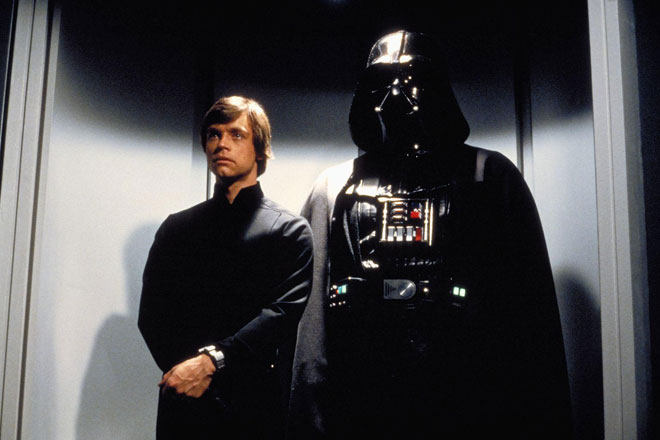
Although “Return of the Jedi” is the least fondly remembered entry of the Star Wars original trilogy, it is still better than any Star Wars film since. Unlike the prequel trilogy, “Jedi” has a good script, and unlike the sequel trilogy, it captures the magic feel of Lucas’s universe. The Ewoks might be annoying, but their silliness is only a small preview of Jar Jar’s obnoxious hijinks. And any faults in “Jedi” are overshadowed by its epic ambitions and its captivating setting.
On the level of plot, the original trilogy is a fairly well-worn tale of light vs. dark. But Lucas transplants the ancient, mythical appeal of this tale into a galaxy so fresh and richly detailed that the newness of the setting compensates for the oldness of the story.
The galaxy is new to us but not to its inhabitants: it feels like it has been inhabited and used for a long time, for longer than our own galaxy. This verisimilitude makes the Star Wars universe feel genuinely immersive, and Lucas populates his universe with the most memorable of characters.
In “Jedi,” Luke is in full badass Jedi mode, Darth Vader has gone from menacing to menacing-but-conflicted, and Han and Leia’s vaguely antagonistic romance is tested first by carbonite and later by all-out war.
“Jedi” contains three separate iconic villains, many exhilarating action sequences (from lightsaber duels to speeder chases to large-scale space battles), plenty of conflict between good and evil, and of course, John William’s spectacular score. If nothing else, it’s just a flat-out fun time at the movies.
6. Before Midnight (2013)
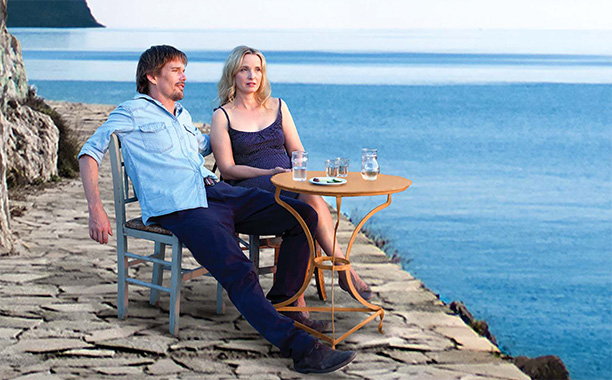
“Before Sunrise” is a fleeting encounter, “Before Sunset” is unpredictably optimistic about the possibility of future romance, and the third installment, “Before Midnight,” abandons much of the dreamy isolation on which its predecessors thrive.
Eighteen years have passed since Jesse and Céline’s initial meeting, and they are now the parents of twin girls. Though they had familial connections and real-world responsibilities in the previous films, these obligations felt distant. In “Midnight,” they are integral. They have other people to talk to now. They have relationship problems. They are middle-aged.
Like a fictionalized counterpart to Michael Apted’s “Up” series, Richard Linklater’s Before Trilogy bypasses the need for age make-up by simply waiting nine years between each film. The resulting authenticity of the emotional (and physical) growth of the characters sets the trilogy apart from almost any other cinematic romance. The screenplay often succeeds at capturing the rhythms of real conversation; it is occasionally cheesy but never contrived.
For viewers looking for a repeat of the wistful, secluded city tours that characterized the first two films, “Midnight” will probably disappoint. But its change in tone is wise and entirely justified: this is a messy, bittersweet film about the messiness, bitterness, and sweetness of middle age.
5. Toy Story 3 (2010)
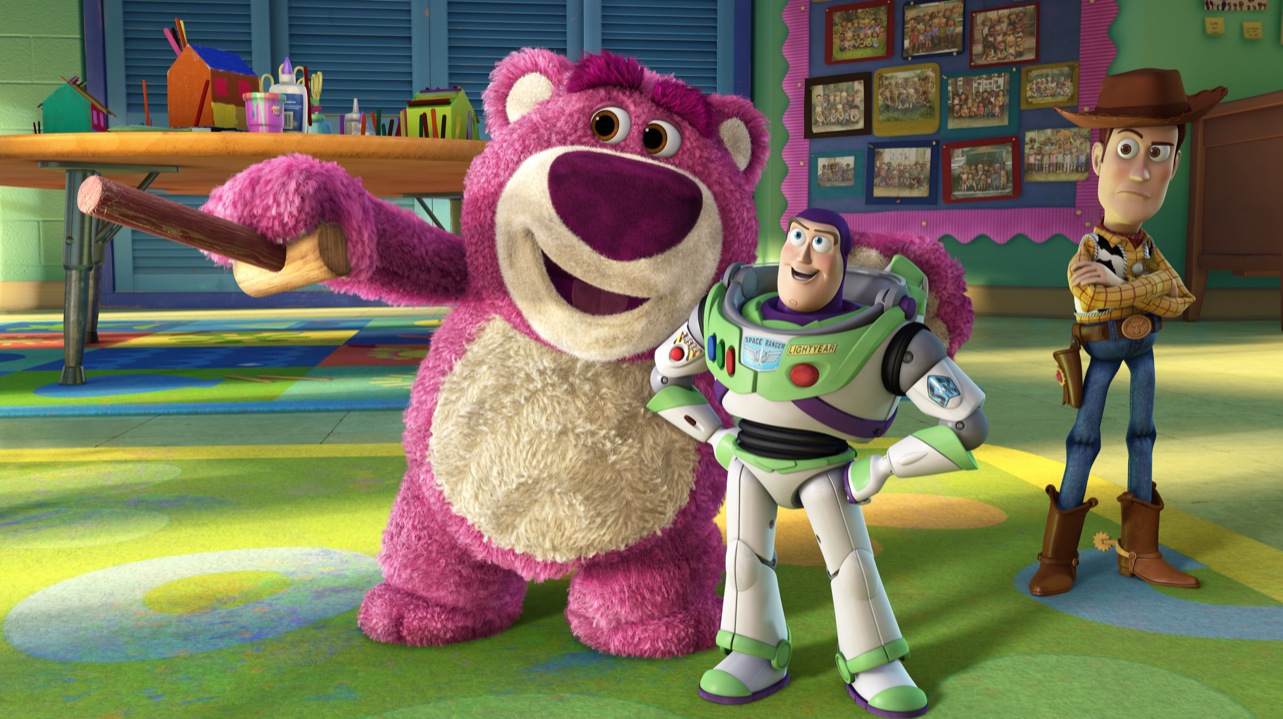
Pixar is not infallible when it comes to sequels (with the mediocre “Monsters University” and the even more mediocre “Cars 2” being prime examples), but the “Toy Story” franchise is top-tier filmmaking from beginning to end.
In the third film, Andy’s toys (with the exception of Woody, who retains his faith in Andy) mistakenly conclude that Andy wants to throw them away before heading to college, and so they sneak into a donation box that takes them to Sunnyside Daycare. They meet an ensemble of other toys, including the malevolent teddy bear Lotso.
“Toy Story 3” is arguably the most poignant episode of the franchise, as it takes the Before Trilogy approach of contemplating how its characters have changed in the years since the previous film. Andy is moving on, meaning his toys must move on too, and the transition is sad and terrifying but ultimately rewarding. Lotso is one of Pixar’s finest villains, and he comes to represent the danger of not moving on.
“Toy Story 3” is a masterful blend of poignancy, comedy, and even plain visceral intensity; if you care about the characters at all, good luck keeping your heart rate down during the incinerator scene.
4. Indiana Jones and the Last Crusade (1989)
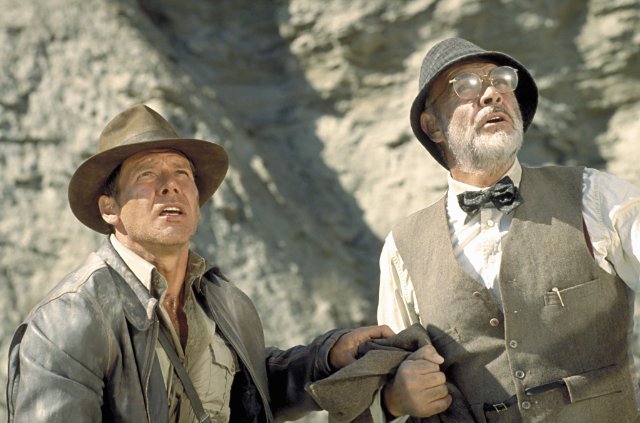
After mixed reactions to “Temple of Doom,” Spielberg and Lucas returned to the plot formula that worked in “Raiders of the Lost Ark”: Indy trying to stop Nazis from acquiring a powerful Judeo-Christian artifact. “Last Crusade” is more tongue-in-cheek than the first two films, and it does not quite manage to capture the lightning-in-a-bottle (or in-an-Ark, perhaps, as Belloq and co. could tell you) nostalgic charm of the first film. But that doesn’t stop it from being one of the best action/adventure films of the 1980s.
Spielberg’s behind-the-camera grin is almost palpable as Indy survives one delightfully over-the-top action sequence after another in his quest to stop the Nazis from finding the Holy Grail and thereby the key to eternal life.
Sean Connery is along for the (motorcycle) ride as Indy’s father, Henry Jones Sr., and the familial dynamic adds both comedy and emotional depth to the proceedings. The sense of wonder and adventure is a constant presence, bolstered considerably by John Williams’ score (especially the magnificent track “The Keeper of the Grail”).
“Last Crusade” is just as much fun as the first in the series and may set some sort of record for the variety of vehicles used in its action sequences: motorcycles, boats, planes, trains, blimps, cars, tanks. It’s a highly entertaining adventure through mysterious locales across Eurasia – desert canyons, old castles hiding Nazi bases, tombs beneath the canals of Venice. It may not have the magic of “Raiders,” but it has a sort of whimsical magic all its own.
3. Three Colors: Red (1994)
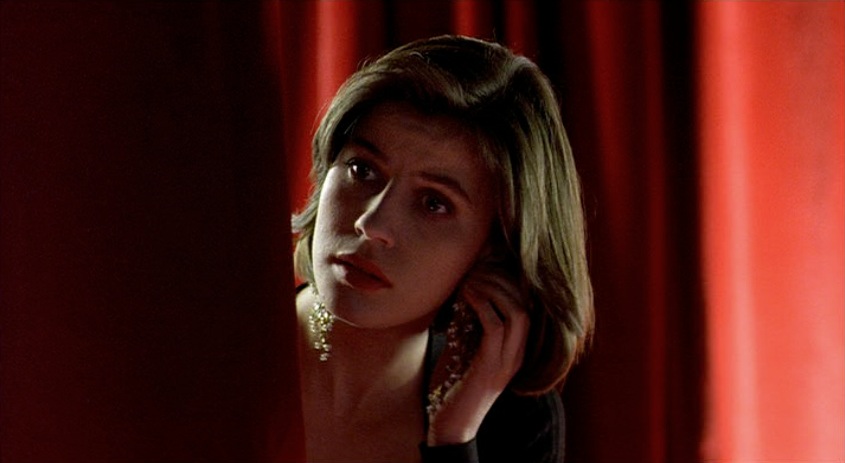
While something like Chan-wook’s Vengeance Trilogy repeats the same theme in each entry, Krzysztof Kieslowski’s Three Colors Trilogy works like a symphony: each part has a different tone and develops a different theme but still feels somehow related to the other parts.
Critics have argued that the three films are about liberty, equality, and fraternity, respectively, or that they represent anti-tragedy, anti-comedy, and anti-romance. But the Three Colors films are only about such clearly defined themes in the most oblique fashion. Kieslowski does something more subtle with his characters, using much elegant visual and musical symbolism.
In “Red,” Valentine Dussault is a university student and model who meets a retired judge after accidentally hitting his dog with her car. She discovers that he has a habit of spying on his neighbors, which he justifies by arguing that the act of spying does not impact anyone’s life.
Kieslowski captures relational dynamics purely through the way he frames his camera, and he is capable of using any little thing – a pen, a traffic light, a broken glass – to say something about his characters. “Red” is concerned with ethics, law, passion, voyeurism, fraternity, survivorship, and love, yes – but there is also something unnameable at work here.
Why, for instance, does every entry in the trilogy show a character watching an elderly citizen trying to recycle a plastic bottle? The answer could simply be that Kieslowski wants to show us how each character is different, since each character reacts to the situation in a different way. But that’s not enough, because what are the chances that three characters who all happened to ride the same ferry would all encounter this exact scenario?
Kieslowski does not propose an answer for these questions. He does not make appeals to fortune or providence. He merely records that life did happen this way – whether through coincidence or fate or divine construction – and suggests that there is something profound and beautiful about it.
2. The Lord of the Rings: The Return of the King (2003)

It may be illogical to discuss “Return of the King” entirely on its own terms. It is so inherently part of the story begun by its predecessors that critiques leveled at it as a stand-alone feature are often irrelevant; perhaps a 30-minute-ish denouement is a bit much for a 200-minute film (as critics have pointed out), but it seems appropriate for a 560-minute film, if we consider the trilogy as a single story.
That said, “Return of the King” has more scope than either of its predecessors. The runtime is longer. The body count is higher. The skirmishes of the first film and the sizable battles of the second film give way to all-out war as the Dark Lord Sauron’s army attacks the city of Minas Tirith. And yet, Jackson keeps the large-scale conflict elegantly balanced with small character moments.
The whole war essentially hinges upon Frodo and Sam’s journey to destroy the One Ring in Mount Doom, and yet, their story is arguably the quietest of all the film’s plots and subplots. For Frodo, the conflict is more spiritual than literal. As his resistance to the corruptive power of the Ring dwindles, his unfailing friend Sam’s loyalty is tested immensely, and these spiritual and personal struggles form the emotional core of the film.
“Return of the King” excels in every area (count its Oscars if you’re not convinced), but it is Howard Shore’s score that absolutely seals the film (and the trilogy) as a masterpiece. Shore’s intricately planned and beautifully performed leitmotifs add nuance to the personal scenes and grandeur to the battle scenes.
Shore brings back and recasts motifs from much earlier in the trilogy, forming auditory cues that give the trilogy a sense of emotional progression and unity. The music flows beautifully together with Jackson’s cinematography and direction. The word “epic” is overused in film journalism, but it truly applies here.
1. The Good, the Bad, and the Ugly (1966)
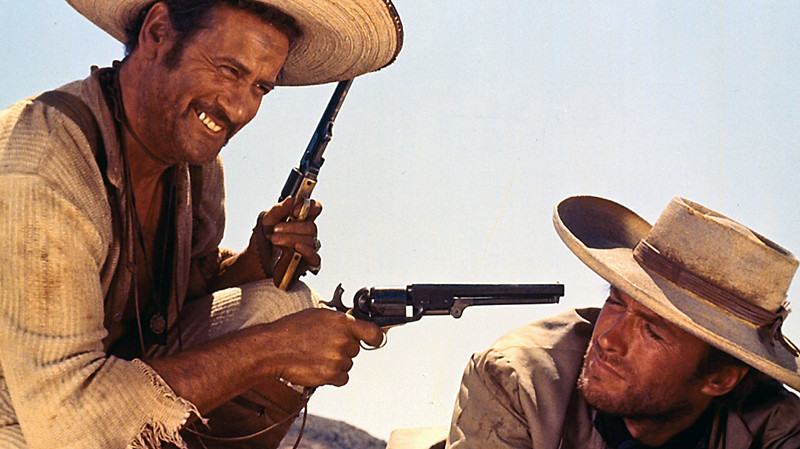
While threequels like “Return of the King” rely on plot set up by previous entries, Sergio Leone’s “The Good, the Bad, and the Ugly” succeeds entirely on its own terms. Leone transcends American Westerns by riffing on them and exaggerating them, transposing the tropes of classical Hollywood Westerns into a grittier setting where morality is murkier.
Spanish deserts and hills stand in for Civil War-era United States as the three titular figures make their way toward a cache of gold buried in a distant cemetery. The only tangible link to the previous films is Clint Eastwood’s Blondie, the enigmatic Man With No Name who wanders through Leone’s revisionist West in search of money, maybe, or excitement, or perhaps just shade from the desert sun that in one sequence blisters his face into near-unrecognizability.
Eli Wallach’s Tuco is the chatty, scheming counterpart to Eastwood’s silent loner, and the duo (if they can be called that; alliances shift with some frequency) often crosses paths with Lee Van Cleef’s Angel Eyes, whose malevolent squint can rival Eastwood’s unflinching one.
These larger-than-life characters – who do not at all live according to the sharp moral lines delineated by the title – fit naturally into the operatic setting captured by Leone’s camera and accented by Ennio Morricone’s score. Leone cuts between vast sunbaked panoramas and close-ups so close-up that you can see the slightest twitch of Eastwood’s eye as he stares down an enemy.
Paired with the iconic whistles and cries of Morricone’s score, the visuals take on a sort of mythic quality. Leone seems to speak things into existence through his lens; there is no indication of any cemetery in the vicinity, but then the camera turns, and the cemetery is there.
There are moments of poignancy, such as the scene where Blondie offers his cigar to a dying soldier, but these quieter moments are always balanced out by the grandiose ones – by the duels where the build-up is more important than the resolution, where the intense close-ups and the crescendo of the score are more exciting than the eventual gunshots.
As grandiose as Leone’s filmmaking flourishes are, “The Good, the Bad, and the Ugly” never feels melodramatic. It feels as if it could not have happened any other way. When the trio stares each other down in a duel, it seems as if they must be hearing Morricone’s music too, waiting for the cue to stop squinting and start shooting. It feels staged and yet natural – natural to the world Leone has created, where characters are less like characters and more like the figures of legend.
Bonus – Some Equally Worthwhile Threequels:
Army of Darkness (1987)
Clear and Present Danger (1994)
Day of the Dead (1985)
Germany Year Zero (1948)
The Human Condition III: A Soldier’s Prayer (1961)
Mission: Impossible III (2006)
Police Story 3: Supercop (1992)
The World of Apu (1959)
The World’s End (2013)
Author Bio: Nathan Quick is an English major pursuing a career in filmmaking and writing. He believes that watching good films is an essential step toward making good films.